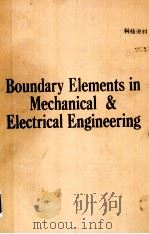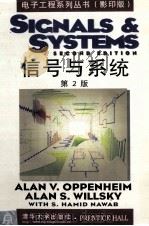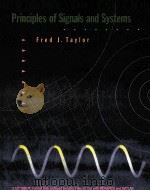《Introductory System Analysis Signals and Systems in Electrical Engineering》
| 作者 | William A.Lynch and John G.Tru 编者 |
|---|---|
| 出版 | 未查询到或未知 |
| 参考页数 | |
| 出版时间 | 1961(求助前请核对) 目录预览 |
| ISBN号 | 无 — 求助条款 |
| PDF编号 | 820282368(仅供预览,未存储实际文件) |
| 求助格式 | 扫描PDF(若分多册发行,每次仅能受理1册) |
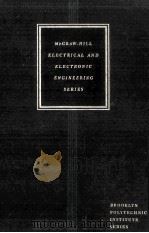
Chapter 1.The Language of Signals and Systems1
1-1.The Cause-and-effect Pattern1
1-2.A Radio Broadcast System2
1-3.Automatic Systems5
1-4.A System to Stabilize a Ship7
1-5.Signals and Systems11
Problems12
Chapter 2.Signals13
2-1.Signals:Physical and Analytical13
2-2.Exponential Signals15
2-3.Negative Real Values of s16
2-4.Positive Real Values of s22
2-5.Complex Numbers22
2-6.Imaginary Values of s27
2-7.Complex Values of s35
2-8.Zero Value of s39
2-9.Integrals and Derivatives of the Unit Step Function40
2-10.The s Plane49
Problems52
Chapter 3.Models for Mechanical Systems65
3-1.The Nature of Analysis65
3-2.Mechanical System Models67
3-3.The Ideal Mass Element67
3-4.The Ideal Spring Element69
3-5.The Ideal Damper Element72
3-6.Summary:Ideal Elements75
3-7.Nature of Linear Models75
3-8.Energy,Work,and Power80
3-9.Ideal Source Elements83
3-10.Through and Across Variables86
3-11.Construction of the Circuit Diagram89
3-12.Derivation of the Circuit Equations95
3-13.Rotational Systems99
3-14.Combined Systems110
3-15.Units115
3-16.Concluding Comments118
Problems121
Chapter 4.Electrical Systems135
4-1.Elements of an Electric Circuit135
4-2.Gravitational Phenomena141
4-3.Electrostatic Phenomena150
4-4.Magnetic Phenomena160
4-5.Electrical Energy Dissipation170
4-6.Node Equations for Electric Circuits171
4-7.Loop Equations178
4-8.Practical Sources181
4-9.Summary186
Problems192
Appendix 4-1.Examples of Node Equations201
Appendix 4-2.The Cathode-ray Tube206
Chapter 5.The Response of Simple Electric Circuits216
5-1.Characteristics of Electrical Networks216
5-2.The Nature of the Circuit Equations220
5-3.The Dynamics of Undriven Systems228
5-4.Unit-impulse Excitation237
5-5.Response to Exponential Excitation242
5-6.Network Interpretation of Driving Signals247
5-7.Some Special Cases251
5-8.Further Relations between Transfer Functions and Time Responses253
5-9.Initial Conditions Represented by Equivalent Sources257
Problems269
Appendix 5-1.Solution of Simultancous Algebraic Equations279
Appendix 5-2.Partial-fraction Expansions280
Chapter 6.The Transfer Function285
6-1.The Forced Component of the Response285
6-2.Calculation of T(s)287
6-3.Sinusoidal Excitation292
6-4.Pole and Zero Constellations295
6-5.Stability297
6-6.Sinusoidal Frequency Response298
6-7.Geometry of the s Plane303
6-8.Exploiting s-plane Geometry312
6-9.Resonance Phenomena320
6-10.Quality Factor324
6-11.Specific Resonant Systems327
6-12.Adjustable-parameter Networks333
Problems343
Chapter 7.The Elements of Analog Simulation and Analog Computers355
7-1.Types of Automatic Computers355
7-2.A Symbolism for Analog Simulation359
7-3.The Essence of Analog Simulation362
7-4.Signal-flow Graphs—A Shorthand Analog Symbolism365
7-5.Systematic Graphing Techniques369
7-6.Graphing Differential Equations372
7-7.Electronic Analog Computers379
7-8.The Algebra of Signal-flow Graphs397
Problems409
Chapter 8.Summary Illustrative Example422
8-1.Introduction422
8-2.Statement of the Problem422
8-3.Steps in Analysis423
8-4.Signal Approximation424
8-5.Formulation of Dynamie Equations425
8-6.Determination of the Transfer Function427
8-7.Response to Step of Amplitude 5428
8-8.Response to the Square Pulse431
8-9.Response to the Sinusoidal Pulse433
8-10.Comparison of the Two Responses437
8-11.Simulation Techniques437
8-12.Analog-computer Simulation439
8-13.Concluding Remarks445
1961《Introductory System Analysis Signals and Systems in Electrical Engineering》由于是年代较久的资料都绝版了,几乎不可能购买到实物。如果大家为了学习确实需要,可向博主求助其电子版PDF文件。对合法合规的求助,我会当即受理并将下载地址发送给你。
高度相关资料
-
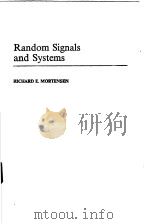
- RANDOM SIGNALS AND SYSTEMS
- JOHN WILEY & SONS
-
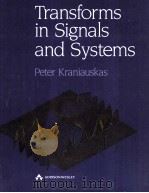
- Transforms in Signals and Systems
- 1992 Addison-Wesley Publishing Ltd
-
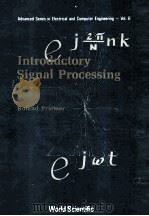
- Advanced Series in Electrical and Computer Engineering-Vol.6 Introductory Signal Processing
- 1991 World Scientific Publishing Co.Pte.Ltd
-
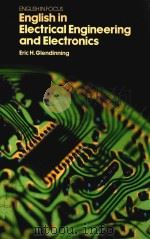
- ENGLISH IN FOCUS ENGLISH IN ELECTRICAL ENGINEERING AND ELECTRONICS
- 1980 OXFORD UNIVERSITY PRESS
-

- ENGLISH IN ELECTRICAL ENGINEERING AND ELECTRONICS
- 1980 OXFORD UNIVERSITY PRESS
-
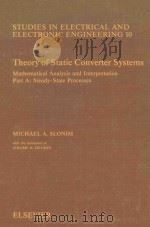
- STUDIES IN ELECTRICAL AND ELECTRONIC ENGINEERING 10 THEORY OF STATIC CONVERTER SYSTEMS
- 1984 ELSEVIER
-
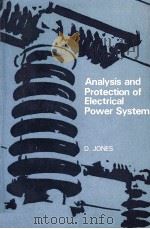
- ANALYSIS AND PROTECTION OF ELECTRICAL POWER SYSTEMS
- 1979 WHEELER PUBLISHING
-
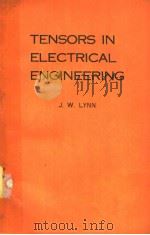
- TENSORS IN ELECTRICAL ENGINEERING
- 1963 EDWARD ARNOLD LTD
-
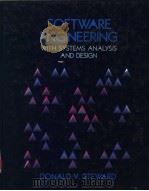
- Software Engineering with Systems Analysis and Design
- 1987 Cole Publishing Company
-
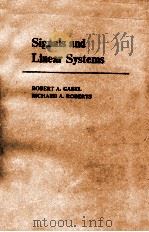
- SIGNALS AND LINEAR SYSTEMS
- 1973 JOHN WILEY & SONS
-

- Introductory Signals and Circuits
- 1967 GINN AND COMPANY
提示:百度云已更名为百度网盘(百度盘),天翼云盘、微盘下载地址……暂未提供。➥ PDF文字可复制化或转WORD
